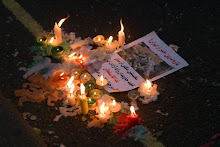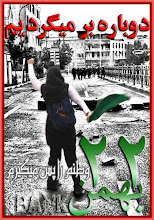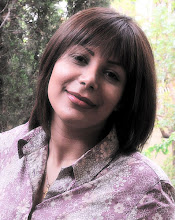
Middle Eastern dance, popularly known as ‘bellydancing’ suffers from all manner of image problems in the West. Firstly, ‘Middle Eastern dance,’ as such, doesn’t exist. There are hundreds of different kinds of dance and, although you will hear people speak of ‘Turkish’ dance, ‘Egyptian’ dance and so forth, it should be understood that these various ways of dancing are really more associated with regions than national borders and even more strongly associated with culture - culture shaped by communities – by their language, religions, occupation, history and relative mobility.
Dance Migration
The extent to which various population groups have migrated, and also the extent to which they themselves have acquired new populations and influences, has had as great an impact on dance as it has had on language, religion, cooking and all other forms of social and political discourse. Thus the traditional, folkloric dance of the Egyptian Camel herders of the Nile region, ‘Saidi,’ for example, will be categorically different from the ‘Mwahashat,’ an Arab/Andalucian court dance. Technically though, they’re both Middle Eastern dances or ‘bellydancing.’ To add to the confusion, they may share some characteristics depending upon exactly which Arab population it was which colonised the Andalucian region of Spain and when.
Restaurants and Cabaret
Bellydancing, in the West, is often considered to be an embarrassing episode in dodgy restaurant at best and, at worst, a form of strip tease. It certainly counts as ‘cavorting in an unseemly manner in public,’ whichever way you look at it and it’s almost always considered to be amateur. So professional dancers in this discipline have their work cut out. Not only do they have to dance better than anyone else if they’re going to have a ghost of chance of being taken seriously and getting paid for what they do, they also have to ward off the prurient interest, entice those with a genuine interest in dance and then, after all that, create opportunities to perform. That bellydance has never, to my knowledge, received any public funding, also speaks volumes, especially when compared with other kinds contemporary dance.
Orientalism and Authenticity
Further complications are added by those who consider the whole business to be an exercise in post imperial Orientalism of the most insidious kind. True this would have to come from someone largely ignorant of the history and culture of the dance and somewhat naïve politically but it shows what serious exponents of this dance are dealing with. If it's 'authenticity' you're looking for, you may need to look elsewhere - if not, take a look at the last video on this post featuring Fifi Abdo dancing at a wedding surrounded by christmas decorations in Egypt. If that doesn't disrupt every last vestige of concern with the 'A' word, nothing will.
From Hollywood to Hip Hop
In the 20th Century, Cinema, especially Hollywood had a huge influence on the Urban dancers of Cairo and Cairo duly returned the favour to Hollywood and particularly to 1970s American pop. Ballet seems to creep in all over the place and I have no doubt that Hip Hop is mixing it up a storm with Saidi and a tinge of Flamenco somewhere – London probably – or Surrey – that beating pulse of the Bellydance Universe - Oh yes! For it was in deepest, darkest Surry that we convened in sequinned apparel to shimmy, camel and undulate our way through three glorious days of sunshine and dancing.
What Happens at a Belly Dance Congress
Bellydance Congress sets aside all these anxieties, raises the calibre to the heavens, and summons the assembled deities of the dance to come and show us the real thing in all its variety and complexity. Congress brings in the megastars from all over the world and devoted fans and students who came from as far afield as the USA and Russia to attend master classes, workshops, and take a once in a lifetime opportunity to see some of these people perform.
Classes and Stars: Leyla Jouvana
I attended two three-hour classes with Leyla Jouvana, one on layering of techniques and moves and the other on dancing with two or more veils to a mixed ability class. I did a technique class, also three hours, with Caroline Affifi, a tabla solos class – that’s dancing to a solo drum - with Kay Taylor and I had the exceptionally good fortune to be facilitating a class with Randa Kamel. In principle I was facilitating one of Leyla Jouvana’s classes as well, but she did not teach in a way that required it so I was able to do the class in full. Jouvana (Germany) and Kamel (Egypt), are major stars and rarely in this country so the opportunity to do their classes is a rare, extraordinary and invaluable privilege. Jouvana’s rigour and attention to detail accompanied by careful, precise explanations make her an exceptional teacher. She is accompanied by her husband, Roland, on the drum, so the music is always exactly as she needs it.
Randa Kamel
Kamel’s class, the one that I facilitated, was for dancers in grades 3 and 4 and I know from experience that these grades at international level are much higher than is appropriate for my experience. ‘Facilitating’ in this instance means that I had to ensure that the rows of dancers in her class were rotated regularly so that everyone had a chance to be at the front. Even now, remembering being at the front of her class, so close to her that I could see clearly every move that she made and exactly how she did it, brings tears to my eyes, it’s a chance I don’t really expect to be repeated and I shall not forget it soon. Hers was not an easy class to follow and many of the students clearly struggled in spite of my best endeavours to ensure they could all see, but the truth is, many were just not up to the level she expected of them.
The Mighty Fifi Abdo
This year’s Bellydance Congress was dominated by the legendry presence of her Imperial Highness, (massive drum roll), her Royal Magnificence, the Astounding FIFI ABDOOOOOOOOOUUUUUUUUUUUUU!!!!!!!!!!!!!!!!!
Gasp. Now I get it. Now I understand why everyone talks of this woman. I talked at length in this post about the problems that Bellydance faces in the West. One of the results of this is that we now have a collection of dancers, excellent dancers, who produce highly polished performances, virtuoso displays of technical perfection. And, yes, they make you gasp, but after a while of seeing one after another after another of these displays, one can start to lose the will to live. The intense focus on technique really can be a bit soulless and where you have a dance whose exponents often rely on cabaret to build up experience, it seems we lack a demanding dramatic repetoire that might serve as a training ground for evolving performance dancers.
The Horse, The Hurricane and a Touch of the Divine
Fifi Abdou whirls through all this like a hurricane. Her dance has a kind of roughness and raw edge to it which is wholly unexpected. She struts about on stage like she owns not only the stage but the audience too. She tosses her mane like some demented dervish horse and twirls and shimmies simultaneously punctuated by deep bowing twirly things – we call them ‘breaks.’ No one dances like this without close attention to detail and careful learning in the early years, but technique, practice and training alone will not bring it either. She’s an immensely expressive, intimate dancer, bold and brash in her gestures, there’s almost a touch of aggression, but combined with her own unique equine grace it all results in an electrifying stage presence and performance.












































1 comment:
Post a Comment